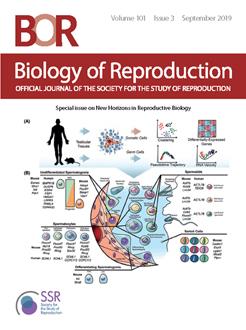Fei Zhao, Humphrey Hung-Chang Yao
Biology of Reproduction 101 (3), 602-616, (6 May 2019) https://doi.org/10.1093/biolre/ioz079
KEYWORDS: Androgens, androgen receptor, anti-mullerian hormone, chromatin, developmental biology, developmental origins of health and disease, differentiation, environmental contaminants and toxicants, epididymis, epigenetics, female reproductive tract, fetal development, male reproductive tract, mechanisms of hormone action, Müllerian ducts, sex differentiation, testosterone, uterus, vagina, vas deferens, Wolffian duct
Alfred Jost's work in the 1940s laid the foundation of the current paradigm of sexual differentiation of reproductive tracts, which contends that testicular hormones drive the male patterning of reproductive tract system whereas the female phenotype arises by default. Once established, the sex-specific reproductive tracts undergo morphogenesis, giving rise to anatomically and functionally distinct tubular organs along the rostral–caudal axis. Impairment of sexual differentiation of reproductive tracts by genetic alteration and environmental exposure are the main causes of disorders of sex development, and infertility at adulthood. This review covers past and present work on sexual differentiation and morphogenesis of reproductive tracts, associated human disorders, and emerging technologies that have made impacts or could radically expand our knowledge in this field.
Summary Sentence
This review covers past and present work on sexual differentiation and morphogenesis of reproductive tracts, associated human disorders, and emerging technologies that have made impacts or could radically expand our knowledge in this field.


